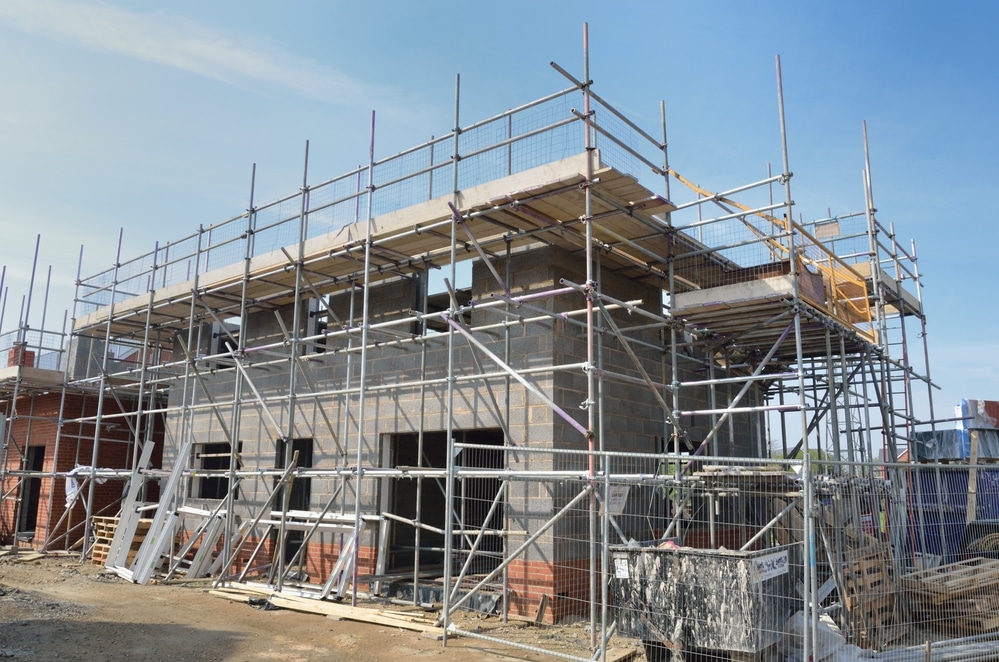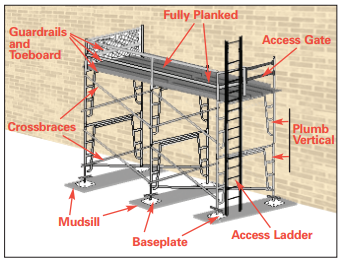Scaffolding Guildford: The Best Option for Your Building and Renovation Projects
Scaffolding Guildford: The Best Option for Your Building and Renovation Projects
Blog Article
Checking Out the Various Types of Scaffolding Used in Construction Tasks
The building and construction industry depends heavily on numerous types of scaffolding to fulfill specific project needs, each offering distinctive benefits and applications. Conventional frame scaffolding provides a durable foundation for general jobs, while suspended scaffolding is necessary for job on high-rise frameworks.

Standard Framework Scaffolding
Standard structure scaffolding is one of the most widely utilized approaches in the building and construction sector because of its toughness and convenience. This system contains horizontal and vertical frameworks that are put together to produce a steady platform for employees and products. The primary parts consist of vertical messages, straight ledgers, and angled braces, which together give a solid structure that can sustain significant tons.
One of the crucial benefits of traditional framework scaffolding is its versatility to various construction tasks, ranging from residential buildings to huge business frameworks. The modular style permits very easy setting up and disassembly, making it effective for both long-term and short-term projects. Additionally, the system can be tailored in height and size, suiting various structure styles and website problems.
Safety and security is critical in scaffolding applications, and typical framework systems are geared up with guardrails and toe boards to avoid drops and guarantee worker protection. Regular assessments and adherence to security guidelines are crucial in maintaining the honesty of the scaffold (Scaffolding). Overall, typical framework scaffolding stays an essential choice in the building and construction industry, offering a trusted platform for labor and improving total project effectiveness

Suspended Scaffolding
Put on hold scaffolding uses an unique solution for construction tasks that require accessibility to raised surfaces, particularly in circumstances where standard frame scaffolding might be not practical. This kind of scaffolding is commonly put on hold from the roofing or upper levels of a structure, utilizing a system of sheaves, platforms, and ropes to produce a functioning room that can be changed to various heights.
Among the main advantages of put on hold scaffolding is its adaptability. It can be conveniently rearranged or reduced to fit adjustments in construction demands, making it perfect for jobs such as window installment, façade job, and upkeep on skyscraper buildings. Furthermore, the marginal impact of suspended scaffolding enables for much better usage of ground space in city atmospheres, where area is typically limited.
Safety and security is a vital factor to consider in the usage of put on hold scaffolding. Generally, put on hold scaffolding supplies a efficient and reliable option for accessing hard-to-reach areas in various building situations, improving both productivity and security on site.
System Scaffolding
System scaffolding, commonly considered as a contemporary remedy in the scaffolding sector, includes pre-engineered components that can be quickly put together and adapted for various construction jobs. Scaffolding. This kind of scaffolding is defined by its modular style, which permits versatility and effectiveness on job sites, accommodating structural needs and various heights
Normally made from high-strength read what he said steel or light weight aluminum, system scaffolding uses improved resilience and stability. The components consist of vertical posts, straight ledgers, and angled braces, which adjoin securely, guaranteeing a robust structure. The design typically includes standard fittings, streamlining assembly and disassembly procedures, consequently minimizing labor time and costs.

Rolling Scaffolding
Rolling scaffolding is a functional alternative to traditional fixed scaffolding, designed for mobility and convenience of use on building sites. This kind of scaffolding includes a system sustained by frameworks with wheels, enabling employees to conveniently move it as needed. The movement feature substantially improves productivity, as it minimizes downtime connected with disassembling and constructing dealt with scaffolding.
Normally built from lightweight materials such as light weight aluminum or steel, rolling scaffolding provides a strong yet portable remedy for jobs needing constant repositioning - Scaffolding. It is particularly beneficial in tasks such as paint, drywall installment, and electric job, where accessibility to various heights and locations is needed
Safety and security is critical in rolling scaffolding style, with attributes such as securing wheels to avoid unintentional motion when in usage, and guardrails to protect workers from drops. In addition, many models are flexible in elevation, suiting numerous job needs.
Cantilever Scaffolding

The layout of cantilever scaffolding usually includes utilizing braces or arms anchored to a building or framework, enabling the platform to extend exterior securely. Security is paramount; therefore, these scaffolds should be engineered to hold up against various loads and environmental problems. Regular inspection and upkeep are important to make certain architectural stability and worker safety and security.
Cantilever scaffolding is favored for its flexibility and efficient usage of space, making it a preferred choice in metropolitan atmospheres where room restrictions are usual. It assists in simpler accessibility to high elevations, eventually adding to the general performance of building tasks. As with all scaffolding types, appropriate training and adherence to security standards are important for employees using cantilever scaffolding.
Final Thought
Traditional frame scaffolding offers stability, while put on hold scaffolding uses adaptability for raised tasks. System scaffolding promotes fast setting up, and rolling scaffolding boosts flexibility for differing job environments.
Typical frame scaffolding provides a tough structure for general jobs, while put on hold scaffolding is essential for work on skyscraper structures.Moving scaffolding is a functional option to standard fixed scaffolding, designed for movement and ease of usage on building and construction websites. As with all scaffolding types, proper training and adherence to safety standards are essential for workers making use of cantilever scaffolding.
Conventional framework scaffolding provides security, while put on hold scaffolding provides convenience for raised jobs. System scaffolding helps with quick assembly, and rolling scaffolding boosts movement for varying work atmospheres.
Report this page